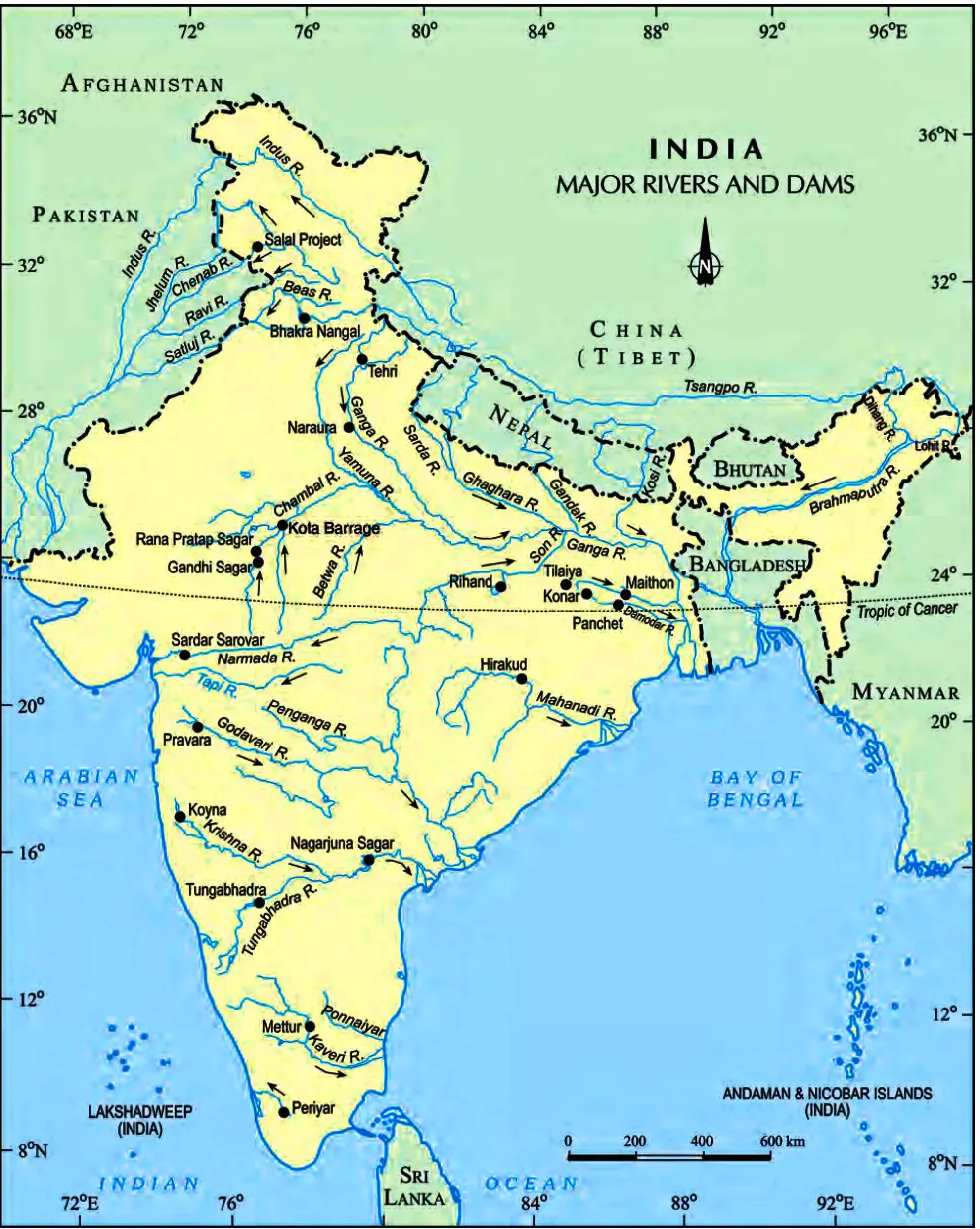Revision Notes for Class 10 Geography – Chapter 3 Water Resources
Are you confused on Revision Notes? Revision Notes for class 10 Geography – Chapter 3 Water Resources is the right place to refer. lets begin the journey …
The three fourth surface of the earth is covered with water but only small proportion of it accounts for fresh water that can be put to use. This freshwater is mainly obtained from surface run off and ground water that is continually being renewed and recharged through hydrological cycle.
Water Scarcity:
Water scarcity refers to less availability of water for fulfilling human and environment needs.
Quantitative Aspects of Water Scarcity:
- The water availability varies over space and time due to the variations in seasonal and annual precipitation. For example – drought are common in Rajasthan.
- Mostly water scarcity is caused by over-exploitation, excessive use and unequal access to water among different social groups.
- Growing Population: It leads to greater domestic demands for food grains. Irrigation requires lot of water and infact agriculture is biggest consumer of water.
- Falling Groundwater Level: Irrigation is one of the main reason behind it. Falling groundwater levels may adversely affect water availability and food security of the people.
- Increasing Urbanisation and Industrialisation: It increased water demand manifold as multiplying urban centres with large and dense populations and urban lifestyles have not only added to water and energy requirements but have further aggravated the problem.
Qualitative Aspects of Water Scarcity:
- The quality of the water is decreasing due to the pollution by domestic waste, industrial wastes, chemicals, fertilisers used in agriculture which makes it hazardous for human use.
- India’s major rivers are highly polluted like Yamuna and Ganga which makes them unfit for human consumption.
Water Conservation and Management
Multi-Purpose River Projects and Rainwater harvesting are some major techniques of Water Conservation and Management.
Multi-Purpose River Projects:
- In ancient times construction of structures like dams built of stone rubble, reservoirs or lakes, embankments and canals for irrigation were built.
- Considered Vehicle of Development: They has been constructed since independence for conservation and integrated water management.
- They are meant for irrigation, electricity generation, water supply for domestic and industrial uses, flood control, recreation, inland navigation and fish breeding.
- Example of Multi-Purpose Rivers: The Bhakra – Nangal in the Sutluj-Beas river basin and the Hirakud project in the Mahanadi basin.
Issues with Large Dams and Multi-Purpose Projects:
- The regulating and damming of rivers affect their natural flow causing poor sediment flow and excessive sedimentation at the bottom of the reservoir, resulting in rockier stream beds and poorer habitats for the rivers’ aquatic life.
- Sedimentation also meant that the flood plains were deprived of silt, a natural fertiliser which adds to the problem of land degradation.
- Dams fragment rivers which makes it difficult for aquatic fauna to migrate.
- The reservoirs that are created on the floodplains also submerge the existing vegetation and soil leading to its decomposition over a period of time.
- Large-Scale Displacement of Local Communities: It led to various environment movements like ‘Narmada Bachao andolan’, Tehhri dam Andolan.
- Irrigation has also changed the cropping pattern of many regions with farmers shifting to water intensive and commercial crops. It led to ecological consequences like salinisation of the soil.
- Increased Social Inequality: Irrigation has also increased the social gap between the richer landowners and the landless poor.
- Inter-State Water Disputes: They are also becoming common with regard to sharing the costs and benefits of the multi-purpose project.
- The dams that have triggered floods due to sedimentation in the reservoir. Also, the big dams have mostly been unsuccessful in controlling floods at the time of excessive rainfall.
- They also induced earthquakes, caused water-borne diseases and pests and pollution resulting from excessive use of water.
Rainwater Harvesting:
It is a viable alternative, both socio-economically and environmentally.
- In ancient India people had developed wide ranging techniques to harvest rainwater, groundwater, river water and flood water in keeping with the local ecological conditions and water needs.
- In Hill and Mountainous Regions: People built diversion channels like the ‘guls’ or ‘kuls’ of the Western Himalayas for agriculture.
- Rooftop Rainwater Harvesting: It was commonly practised to store drinking water, particularly in Rajasthan.
- In the Flood Plains of Bengal: People developed inundation channels to irrigate their fields.
- In Arid and Semi-Arid Regions: Agricultural fields were converted into rain fed storage structures that allowed the water to stand and moisten the soil like the ‘khadins’ in Jaisalmer and ‘Johads’ and traditional underground water storage like tankas in Rajsthan. Rainwater, or palar pani, as commonly known in these parts is considered the purest form of natural water.
Interesting points
- Some Important Water Conservation Techniques in Ancient India:
- In the first century B.C., Sringaverapura near Allahabad had sophisticated water harvesting system channelling the flood water of the river Ganga.
- In the 14th Century, the tank in Hauz Khas, Delhi was constructed by Iltutmish for supplying water to Siri Fort area.
- Sardar Sarovar Dam: It has been built over the Narmada River in Gujarat. It covers four states —Maharashtra, Madhya Pradesh, Gujarat and Rajasthan.
- Narmada Bachao Andolan or Save Narmada Movement: It is a Non Governmental Organisation (NGO) that mobilised tribal people, farmers, environmentalists and human rights activists against the Sardar Sarovar Dam.
- Krishna-Godavari Dispute: It is due to the objections raised by Karnataka and Andhra Pradesh governments. It is regarding the diversion of more water at Koyna by the Maharashtra government for a multipurpose project.
- Jawaharlal Nehru proudly proclaimed the dams as the ‘temples of modern India’.




